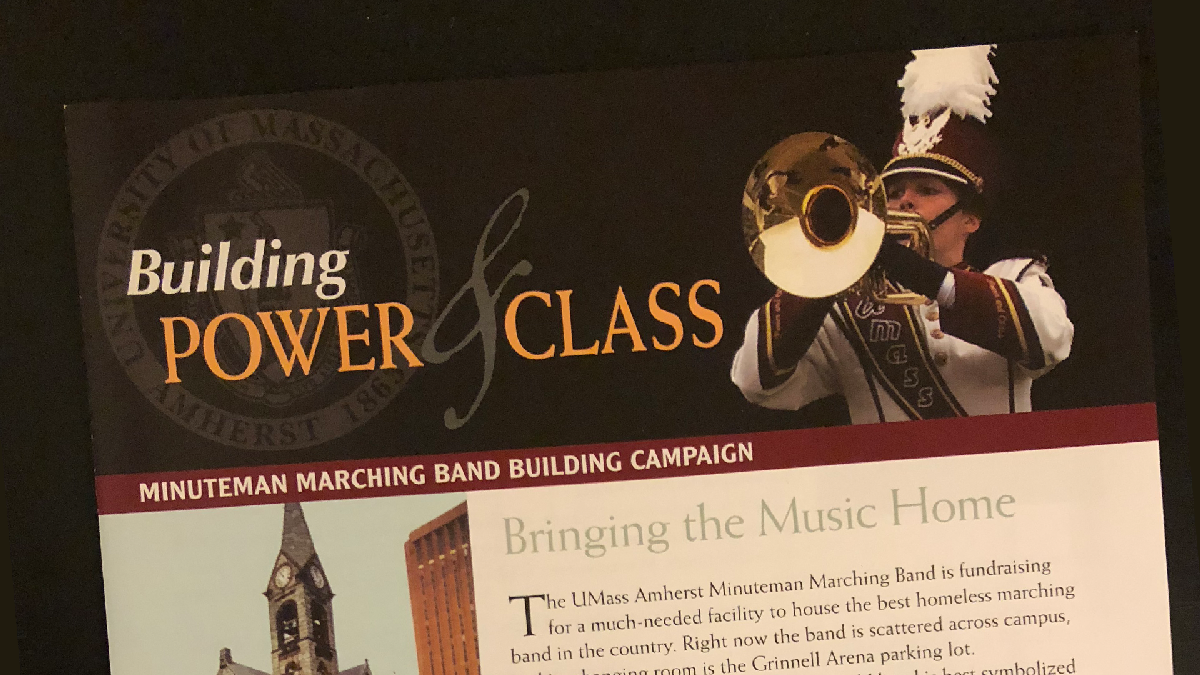In an economic downturn, public universities face a daunting set of challenges. As state budgets feel the pinch, legislatures no longer step up to the plate. A University of Illinois annual fund mailing shows that state support constituted just 18 percent of its operating budget in 2008, down from 29 percent in 1995 and 40 percent in 1985.
Financing of building construction projects is particularly difficult. Business and employee matching gift policies, as well as those attached to foundation grants and charitable gifts, are often restricted to academic programs or scholarships. Large donors also tend to prefer these.
Despite the difficulties, a number of public universities have under way or recently completed new band buildings. Most of these building projects languished on the drawing boards — often for 10 or more years. Their fundraising success took different paths.
The University of Florida was in the unusual and enviable position of getting two major gifts — one from New York Yankees owner George Steinbrenner (for whom the building will be named) and a second from Stephen Stills (of Crosby, Stills and Nash). At Colorado State University, the student body approved a $10 per credit hour surcharge to fund multiple building projects in recent years. Louisiana State University funded about half of its band building using revenue from athletic events generated through a ticket surcharge.
Among these, the University of Massachusetts’ fundraising campaign is unique. Upwards of 25 percent of the final cost was needed to supplement the $4.5 million pledged from internal sources. To date, the building campaign has generated almost $1 million in cash and pledges. More importantly, more than 90 percent of these donations are in amounts less than $1,800, or an average gift of about $650.
As executive director of development Richard Rodgers observed, “This campaign is unlike any I’ve ever seen. It’s been a grassroots effort from the start.” Through the unrelenting efforts of UMass Minuteman Marching Band alumni, parents and friends, they brought in donations — 1,450 of them at this writing. Indeed, the project never would have gotten off the ground without them.
Loyal UMMB alumni and band parents have lead the grassroots fundraising effort. Band parents keep close tabs on the campaign through their support group and website founded by one of their own in 2001. They distributed hundreds of fliers at the conclusion of summer band camp. One Massachusetts high school band support group mailed 100 letters to high school band directors challenging other parent support groups to match their $1,000 pledge.
In 2008, a grassroots effort comes as no surprise. Congressman Ron Paul’s online fundraising reaped $6 million in 24 hours last December. President-elect Barack Obama raised $603 million from over 3 million donors — 50 percent in donations less than $200, and the average donation was $86.
Development offices and their surrogates can, and indeed some do, mimic campaign fundraising techniques with websites, targeted e-mail, social networks, and the like. It remains to be seen whether they can generate the same intensity in volume and repeat gift giving. The University of Massachusetts band building campaign represents a gamble that could upend conventional wisdom about fundraising. The proposition is that raising $100,000 from 1,000 donors at $100 each can be equally or more cost effective than landing a major gift at the same price tag. The current economic climate is a good test case. An increasingly tech-savvy young donor pool argues for embracing the transition to online fundraising.
By Christine B. Williams
MassHighTech
November 21, 2008
Christine B. Williams is a professor of government at Bentley University, a member of the UMMB building fundraising committee and a band parent.
